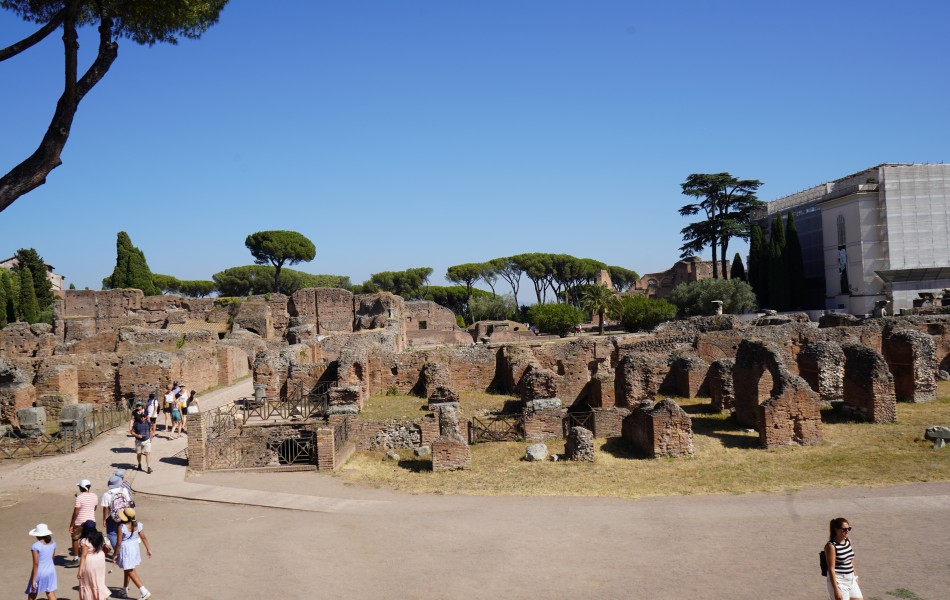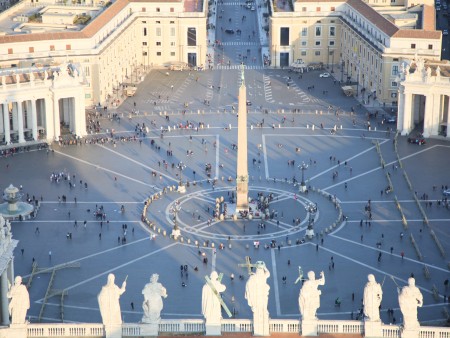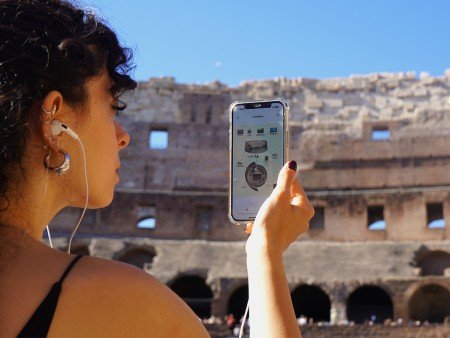Spicy Secrets of Ancient Rome discovered on the Palatine Hill
Learn more about the newly opened Horrea Piperataria: its history, what to see, the significance of the place, and how to visit

08 January 2025
Rome Travel GuideDiscovering the Horrea Piperataria: A New Gem on the Palatine Hill
The Eternal City never ceases to amaze, and Rome has just added another treasure to its extensive list of must-see landmarks. The recently opened Horrea Piperataria on the Palatine Hill is a fascinating addition to the ancient ruins that already captivate millions of visitors each year. This site provides a rare glimpse into the bustling trade networks that fueled the Roman Empire and connects modern visitors to the city’s rich past in a tangible way. If you’re planning a trip to Rome, here’s everything you need to know about this newly accessible site and why it should be on your itinerary. In order to enter the Horrea Piperataria you need a special access ticket, a combined ticket that includes other sites of great interest on Palatine Hill and in the Roman Forum, such as the House of Augustus, the Domus Tiberiana, and Nero's Cryptoporticus. Explore the Horrea Piperataria and the other sites with special access within the broader context of Ancient Rome, booking the exclusive Super Sites Rome Tour.
What Are the Horrea Piperataria?
The Horrea Piperataria were an ancient Roman warehouse that specialized in the storage and trade of spices, an integral part of the economy and culture of the Roman Empire. The name “Piperataria” derives from the Latin word “piper,” meaning pepper, which was among the most sought-after commodities stored here. However, the warehouse likely housed other exotic spices such as cinnamon, cloves, and nutmeg, imported from distant regions like India, Arabia, and Southeast Asia. These spices were highly prized in ancient Rome, not only for their culinary uses but also for their role in medicine, religious ceremonies, and even perfumery. In many cases, spices were considered luxuries, often exchanged as gifts or used as symbols of wealth and status. The Horrea Piperataria played a central role in facilitating this high-value trade, acting as a hub where these precious goods were stored, managed, and distributed across the empire.
The warehouse was constructed during the height of the Roman Empire, under the reign of Emperor Domitian (81–96 CE). Domitian was known for his extensive building projects, which sought to enhance the infrastructure of the empire and leave a lasting legacy. The Horrea Piperataria was part of this ambitious program, showcasing the emperor’s vision for a well-organized and thriving trade network. Its strategic placement on the Palatine Hill, close to the Roman Forum and key trade routes, underscores its importance in managing the influx of luxury goods into the empire.
Located on the Palatine Hill, this warehouse was part of a larger network of horrea (warehouses) spread throughout the city. These storage facilities were essential for organizing the vast array of goods that flowed into Rome, from basic staples like grain and olive oil to luxury items like silk, jewels, and, of course, spices. The architectural design and durability of the Horrea Piperataria highlight the engineering expertise of the Romans, ensuring that it could securely house valuable goods while standing the test of time.
Why Are the Horrea Piperataria Important?
The opening of the Horrea Piperataria to the public is a significant milestone for historians, archaeologists, and visitors alike. This site offers an unparalleled opportunity to explore the economic and cultural dynamics of ancient Rome, especially its extensive trade networks that connected the Mediterranean world with far-flung regions in Asia and Africa. Spices like pepper and cinnamon were not merely commodities but symbols of Rome’s dominance and cosmopolitan reach. They traveled thousands of miles along the famous Silk Road and maritime trade routes before arriving in the bustling ports of the empire.
The Horrea Piperataria also sheds light on the lives of the merchants, workers, and administrators who managed the spice trade. Archaeological findings, such as tools, ledgers, and remnants of spices, reveal a highly organized and sophisticated system of commerce. These discoveries help paint a vivid picture of the daily activities within the warehouse, from the meticulous cataloging of goods to the bustling exchanges between traders. Additionally, the presence of storage jars and wooden crates hints at the advanced preservation techniques employed to protect these valuable commodities from spoilage.
By visiting the site, tourists can gain a deeper understanding of how the Roman Empire’s economy functioned and how its trade networks influenced not only the lives of Romans but also those of the peoples connected to this vast system. The Horrea Piperataria serves as a testament to Rome’s ingenuity, ambition, and its unquenchable thirst for luxury and exoticism.
Where Are They Located?
The Horrea Piperataria is situated on the Palatine Hill, one of the most iconic and historically rich areas of Rome. This hill is famously known as the legendary birthplace of Rome, where Romulus and Remus, the city’s mythical founders, were said to have been nurtured by a she-wolf. Over centuries, the Palatine evolved into the political and ceremonial heart of the Roman Empire, housing imperial palaces, temples, and opulent gardens.
The warehouse’s location on the Palatine Hill is no coincidence. In ancient times, the hill overlooked the Roman Forum, the central hub of political, economic, and social life. This strategic vantage point allowed for efficient management and distribution of goods stored in the warehouse. Today, the Palatine Hill is part of the archaeological complex that includes the Colosseum and the Roman Forum, making it an essential stop for anyone exploring the ancient heart of Rome. The Horrea Piperataria adds yet another layer to the rich tapestry of ruins on this historic hill, giving visitors a new perspective on the interconnectedness of commerce, politics, and daily life in ancient Rome.
What Can You See There?
When you visit the Horrea Piperataria, you’ll step into a carefully preserved area that vividly evokes the ancient Roman spice trade. The site features storage rooms where large clay jars and wooden crates were once meticulously organized to store spices and other luxury goods. These remnants provide a tangible sense of the methods used to safeguard and manage these valuable commodities. The architectural design of the warehouse, with its characteristic Roman brickwork and arches, reflects the ingenuity and durability of Roman engineering, ensuring the security of goods over time. Interactive displays have been installed to enhance the visitor experience, offering engaging insights into the spice trade, from the routes these exotic goods traveled to their diverse applications in Roman society. Archaeological finds, including carbonized seeds, fragments of spices, tools, and even sections of ancient ledgers, offer a window into the warehouse’s daily operations. As you explore the site, you’ll also be treated to breathtaking views of the surrounding ruins and the Roman Forum, making the experience both educational and visually enchanting. The atmosphere of the Horrea Piperataria invites visitors to imagine the bustling activity of merchants and workers who once animated this space, playing a vital role in the Roman economy.
How Can You Visit the Horrea Piperataria?
The Horrea Piperataria is included in the standard ticket for the Colosseum, Roman Forum, and Palatine Hill, making it easy to add to your itinerary. Tickets can be purchased online or at the entrance, but given the site’s recent opening, it’s highly recommended to book in advance to secure your spot. As the site gains popularity, guided tours are an excellent way to enhance your visit. These tours often include detailed explanations and fascinating anecdotes that bring the history of the warehouse to life. For those who prefer a self-paced experience, audio guides and informative panels are also available.
Why You Shouldn’t Miss Them
The Horrea Piperataria is more than just an ancient warehouse; it’s a window into the complex and vibrant world of ancient Roman trade. This newly opened site allows visitors to uncover a lesser-known yet essential aspect of Roman life, while also enjoying the stunning surroundings of the Palatine Hill. From its role in the spice trade to its architectural beauty, the Horrea Piperataria offers a journey through history that’s as educational as it is enchanting.
So, if you’re planning a trip to Rome, make sure to add the Horrea Piperataria to your itinerary. It’s a spice-filled adventure that promises to leave you with a newfound appreciation for the ingenuity and global reach of the Roman Empire.
Our categories:
You may also be interested ...

Vatican Private Tour with Sistine Chapel & St. Peter's Basilica: Renaissance’s Wonders
Private tour
Discover with a skip the line Private Vatican Tour the Sistine Chapel, Vatican Museums and St Peter’s Basilica
starting from: € 275

Colosseum Guided Audio Tour with Roman Forum and Palatine Hill
Private tour
Discover Ancient Rome’s secrets and history with our immersive Colosseum guided audio tour, rich in image and content
starting from: € 51 € 42